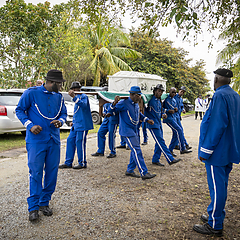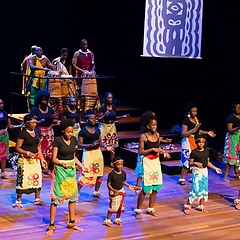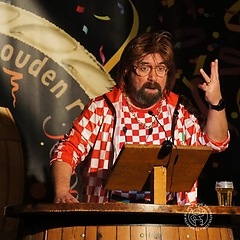The St Matthew Passion by the Nederlandse Bachvereniging in the Grote Kerk (Great Church) Naarden takes place in the week before Easter, in the so-called Holy Week. There are five or six performances of the piece of music during that week, three of which take place during the day with a long lunch break (Palm Sunday, Good Friday, and Silent Saturday). The other performances are in the evening.
The piece will be performed by the choir and the orchestra of the Nederlandse Bachvereniging. The music is by Johann Sebastian Bach and tells the story of the passion of Jesus Christ. This Passion story is also depicted on the painted ceiling in the church, so the music piece and the decor form one whole.
The musical direction differs from year to year, and so does the approach to the work. Thus, almost every year, a different cast, set-up and musical conception is used. In total, there are about 70 performers on stage. Every conductor has his own vision and makes small adjustments to the piece. Because of this open approach, tradition and innovation go hand in hand in the St Matthew by the Nederlandse Bachvereniging. The constant factor is the Nederlandse Bachvereniging, who always provide the ensemble and the singers, and the Grote Kerk Naarden as the venue. The small scale of the performances creates a sense of security, an important core value of the tradition.
A week before the performances, both organisations start with the preparations in the church. The rehearsal period begins, and everything is prepared for the concerts. The work consists of two parts with an interval in between. The work itself lasts almost three hours and is always performed in its entirety and not, as often happens, shortened. For many visitors, there are a number of musical highlights in the work, such as the opening and closing choruses, and the famous aria "Erbarme dich".
Just before a performance, a 'ribbon' of visitors forms around the church: in Naarden, this is known as the 'corridor to the St Matthew'. For many people, the performance is a moment where they meet again, and it has become a family tradition where people who used to attend the St Matthew as children with their grandparents now bring their own (grand)children.



